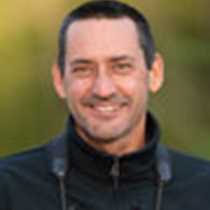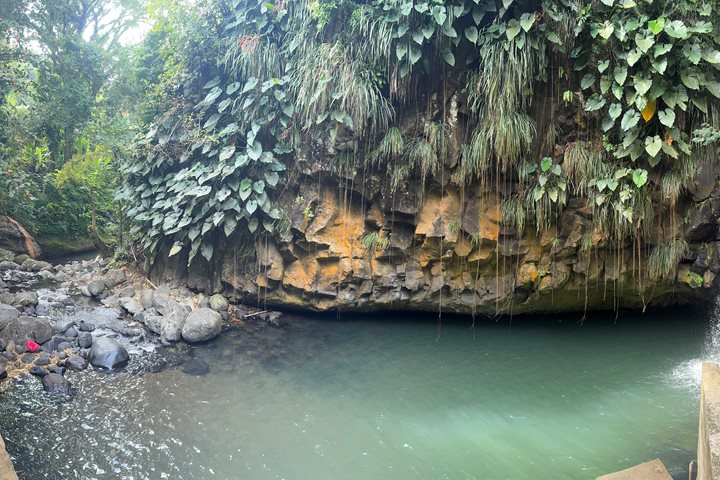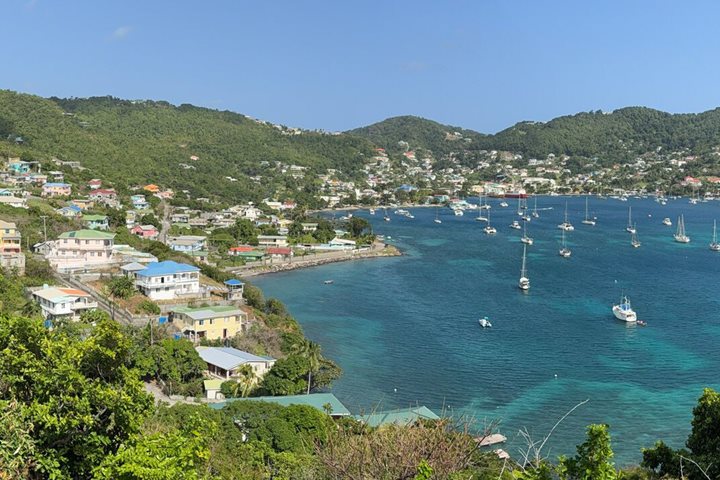Anchors up from our protected berth in Chatham Bay on Union Island at 4:00 a.m. We motored to the largest of the Grenadine Islands, Becquia, our next port of call. The winds were a Beaufort five for the 30-mile passage. We arrived in Admiralty Bay at 7:45 a.m. After an early breakfast, tenders took us into the charming small village of Port Elizabeth where we boarded our small pickup trucks to our morning’s visit. We broke into two groups and my group went first to the Fort Hamilton lookout. The fort is named after Alexander Hamilton whose father was born on the Leeward Island of Nevis. The founding fathers of the American Republic had close associaiton with the Antilles. Jefferson’s family hailed from St. Kitts and George Washington and his elder brother Lawrence spent time in Bridgetown, Barbados, where his brother sought a cure from TB. Trade between the 13 colonies on the mainland the islands, particularly from ports like Charleston and Savannah was strong.
It was at once apparent that the racial mixture of the people of Becquia is more evenly divided than on many of the other islands. The early European’s who came here included a number of indentured Scots who worked on the early sugar plantations. There was still a small relic population of Caribe Indians left on the island when the Scots arrived. These original settlers who emigrated up from the Orinoco Basin centuries earlier had already begun to mix with the African population also brought to work the sugar plantations. The largest of these plantations were located on the east side of the island, near Industry Bay. The people who resulted from this Caribe/African mix were called “Garafuna,” or sometimes “Black Caribe.” I cannot testify to my following etymology but it sounds to me as if the word “Garafuna” may be a dialect expression of “Caribe-fumé” with “fume” suggesting the darkening of the skin when the races mixed.
Our next stop was to the turtle sanctuary of Brother Orton King, a former commercial turtle fisherman who some years ago came to the realization that the turtles, fish and reefs, which he knew as a child with their rich abundance of fish, were being destroyed by overfishing and other exploitative industries. Brother King explained that he is trying to help serve the turtles, which he had formerly hunted for their shells. It is now 20 years since he began to raise recently hatched hawksbill and green turtles in his saltwater pools. To date he has released 995 turtles and this year in May he hopes to see his first mature adults return to lay their eggs. He receives no government support for his work and as a result we have always elected to visit him to support his efforts.
Once back in the lovely village of Port Elizabeth, we spread out in multiple directions exploring the small shops and stores. I always love to visit the model ship builder’s studio, the Becquia bookshop and the lovely Anglican Church. We next stopped at our favorite watering hole Jack’s Bar which sits atop Princess Margaret Bay. The water in front of Jacks is an indescribable pale blue turquoise. You can see the bottom at depths exceeding 20’. We enjoyed our few hours swimming and snorkeling here and of course, the wonderful Caribbean tropical drinks.
Once back onboard we had the famous pasta luncheon, which is made by placing your order of pasta inside a 150 pound round of Reggio Parmegiano cheese and scraping the cheese on to the pasta from the sides of the wheel. Few ever have only one order! The sea put on a grand show as we sailed between St. Vincent and Becquia with 8 to 10 foot swells and beautiful blinding white caps. Sea Cloud rode like a dream and many of us were on the bridge enjoying the show. Cocktails and the festivities for our last night together were on the Lido Deck beginning at 6:30 p.m. I find these last nights both festive and slightly sad as we have made so many new friends and now must say goodbye. Perhaps we should rather say, until we sail again and bon voyage.









